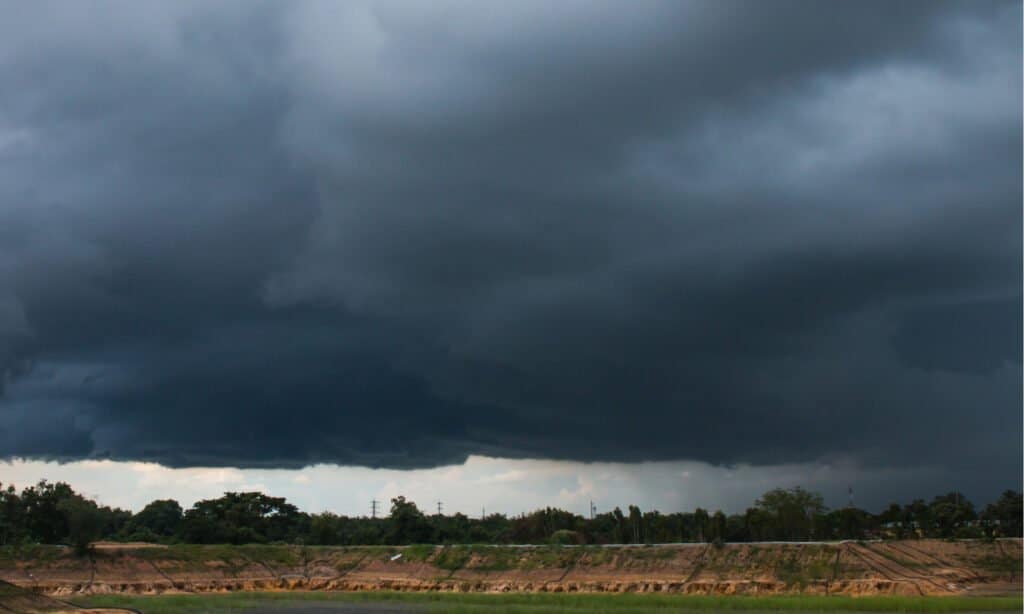
The United States ranks relatively low in annual precipitation on the global scale, being 112 places behind the leading nation in rainfall. Colombia.
©Somyot Mali-ngam/Shutterstock.com
The United States of America covers 3,531,905 square miles, accounting for 6.1 percent of the planet’s surface. Because of the country’s enormous diameter, precipitation quantity and consistency vary widely. Although some states receive far more rain than others, others are dry, obtaining only a few inches of rain every month. Throughout the year, much of the central and upper eastern United States receive uniformly distributed rainfall. Storm patterns in the Pacific Ocean bring rain to much of the western United States in the spring, winter, and fall. But of all these states that are blessed with enough rainwater every year, which of them is the wettest?

The amount of precipitation received in various types such as rain, snow, fog, and drizzle determines the wettest areas on the planet. Precipitation frequency is influenced by wind patterns, temperatures, land topography, latitudes, proximity to water bodies, and other factors. Below, we will discover the 10 wettest states in the US, how much rainfall they receive every year, and other fascinating facts.
The 10 Wettest States In The United States
10. South Carolina – 49.8 Inches Of Rain Per Year

On average, South Carolina receives an average of 48 inches of rain per year.
©iStock.com/UWMadison
South Carolina receives an average of 49.8 inches of rain per year, which is quite more than the national average of 38 inches. On average, the state receives precipitation 103 days a year. Annual precipitation in South Carolina varies between 40 and 80 inches over the state, with some regions of the Appalachian temperate rainforest receiving up to 100 inches. Extratropical cyclones contribute to precipitation throughout the winter, fall, and spring months. In contrast, tropical cyclones play an essential role in precipitation during the summer and fall months due to hot and humid circumstances. While practically the entire state receives plenty of rain throughout the year, the coast has a slightly wetter summer. Furthermore, thunderstorms occur on an annual average of 64 days in South Carolina, most of them occurring during the summer.
9. North Carolina – 50.3 Inches Of Rain Per Year

North Carolina receives 49.3 inches of rain per year on average, reaching 50 inches in hilly areas.
©iStock.com/digidreamgrafix
The climate of North Carolina varies from moderate continental temperatures in the mountains, with cooler summers and more rainfall, to subtropical temperatures in the state’s southeastern portion. North Carolina receives 50.3 inches of rain per year on average, reaching 50 inches in hilly areas. Except for the highest elevations of the Appalachians, the majority of the state has a humid subtropical climate.
Storms in July are to blame for a lot of the state’s precipitation, and tropical cyclones are responsible for up to 15% of the rainfall in the Carolinas during the summer months. Hurricanes strike the state’s coasts occasionally, while tornadoes have been reported inland.
8. Arkansas – 50.6 Inches Of Rain Per Year
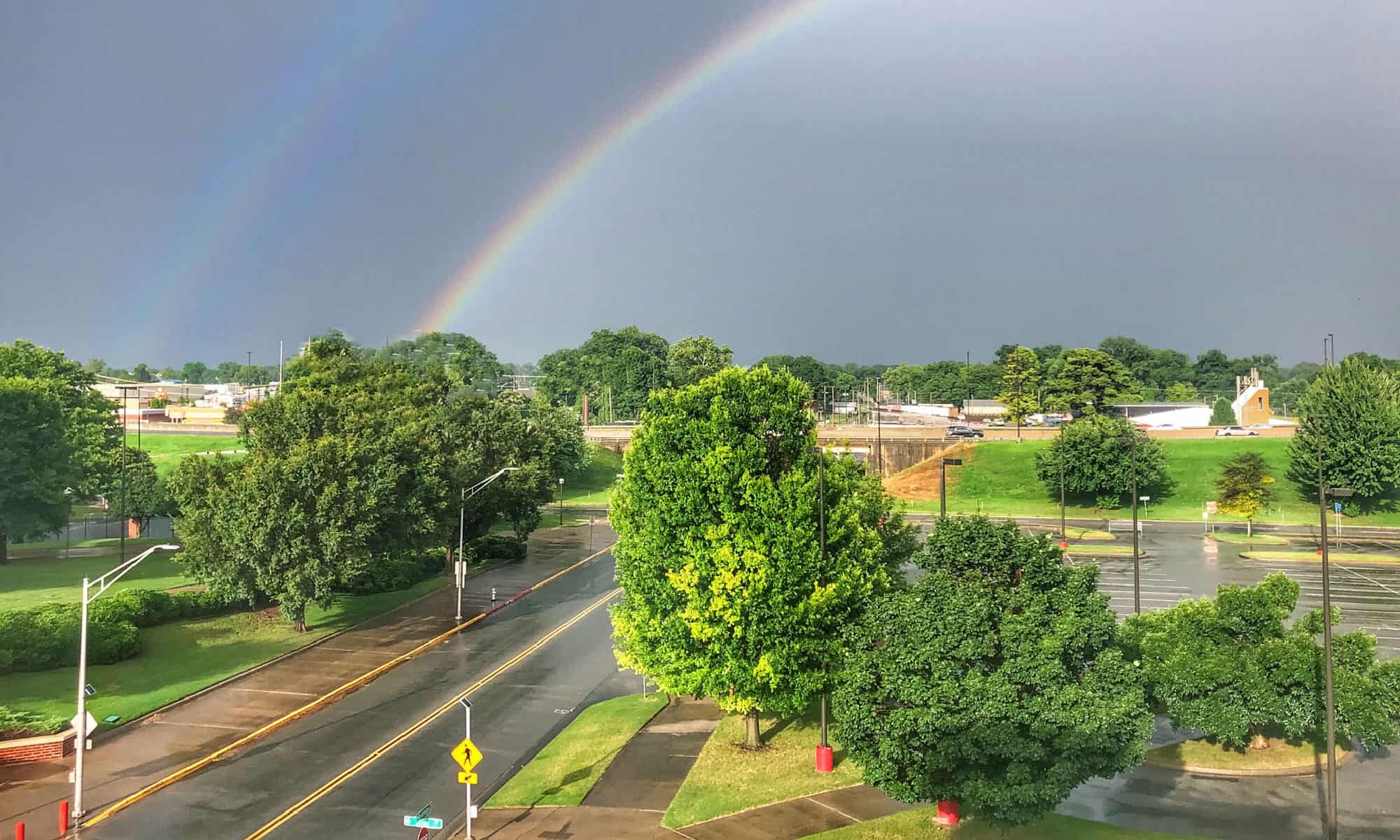
Receiving an average amount of 50.6 inches of rainfall annually, Arkansas is one of the country’s wettest states.
©iStock.com/Michael Dean Shelton
Arkansas has a subtropical climate with hot, humid summers and warm to chilly winters. The state receives 50.6 inches of annual rainfall on average, with the southeast region and the Ozark and the Ouachita Mountains receiving more. The wettest season in the south is winter, whereas the wettest season in the north is spring. Snowfall is uncommon in the state’s northern half, but ice storms occasionally occur in the state’s southern half. On average, Arkansas receives precipitation 95 days per year. Arkansas has a humid subtropical climate that crosses into humid continental territory in the northern highlands. Because the state is close enough to the Gulf of Mexico, the warm, vast body of water serves as the state’s primary meteorological influence.
7. Georgia – 50.7 Inches Of Rain Per Year

Precipitation in Georgia ranges from 80 to 45 inches with an average of 50.7 inches per year.
©iStock.com/Sean Davis
Georgia has a humid subtropical climate with short, warm winters and long, scorching summers. It is also the biggest state east of the Mississippi River. Precipitation in Georgia ranges from 80 inches in the mountainous northeast to 45 inches in the eastern and central parts of the state, with an average of 50.7 inches per year. The climate varies significantly in north Georgia due to the topography. The majority of the state’s northern half comprises undulating hills, with elevations varying from roughly 400 feet in the Midstate to around 800 and 1,100 feet throughout. Georgia is also no stranger to violent storms and hurricane aftershocks. A tropical storm hit central Georgia in 1994, dumping a whopping 20 inches of rain in just 24 hours.
6. Tennessee – 54.2 Inches Of Rain Per Year

Tennessee has an average yearly rainfall of 54.2 inches and is the sixth wettest in the U.S.
©iStock.com/benkrut
According to a recent assessment of monthly and annual rainfall in each state, Tennessee is the sixth wettest in the United States. Tennessee ranks high on the list, with an average yearly rainfall of 54.2 inches and an average monthly rainfall of 4.1 inches. Tennessee spans from the Appalachian Mountains to the Mississippi River in the southeast United States. The state’s climate is characterized by substantial temperature changes, resulting in hot, humid summers and chilly winters. The state’s wettest year was 1957 when it received 66.32 inches of rain. On the other hand, the periodic downpours shower Tennessee’s vistas in a rainbow of colors.
5. Florida – 54.5 Inches Of Rain Per Year
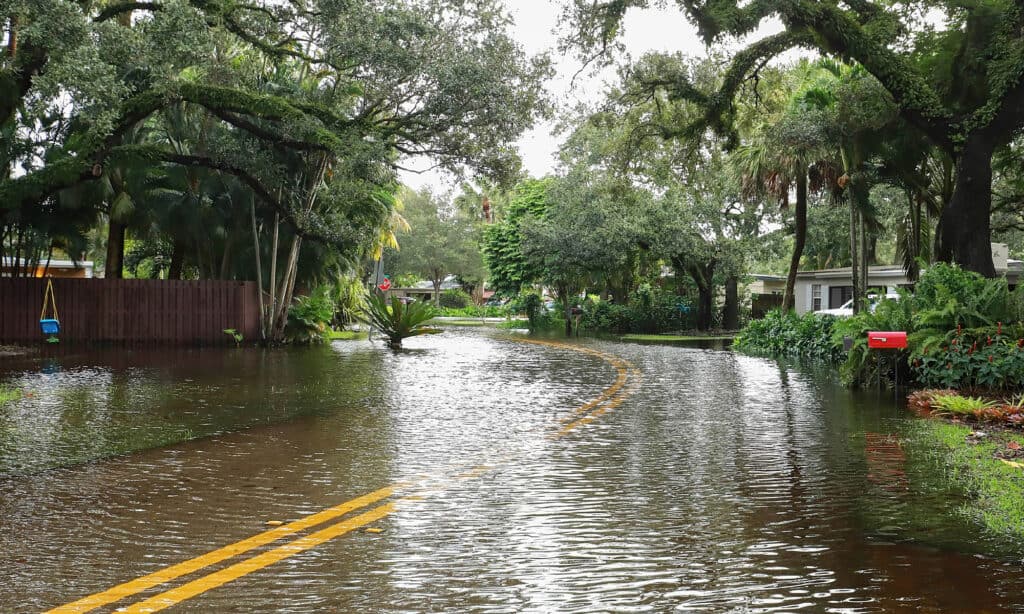
Florida is the southernmost US state and also the country’s fifth rainiest.
©iStock.com/JillianCain
Apart from being the southernmost US state, Florida is also the country’s fifth rainiest, with an average annual rainfall of 54.5 inches, with more precipitation occurring from June through September. Because no region of Florida is too far from the ocean, and the state’s widest point is only 160 miles, the state has a mild temperature throughout. The area of Florida north of Lake Okeechobee boasts a humid subtropical climate, whereas the area south of the lake has a tropical climate. The state has the highest number of thunderstorms and lightning strikes in the country each year. As storm clouds sweep in, it’s not unusual to see locals and visitors lounging under sun umbrellas.
4. Alabama – 58.3 Inches Of Rain Per Year
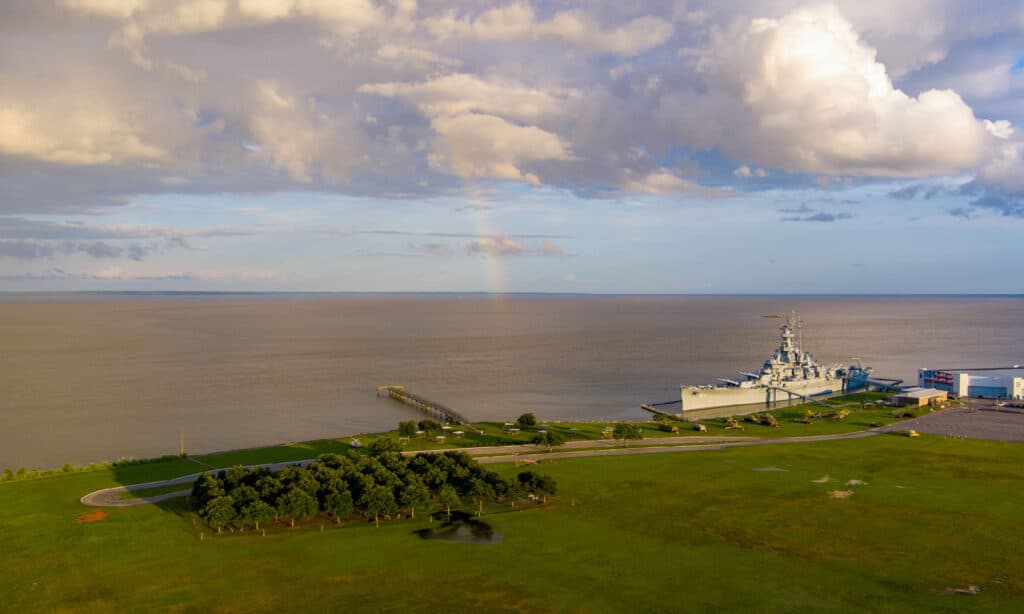
With annual precipitation of 58.3 inches, Alabama ranks as America’s fourth wettest state.
©iStock.com/George Dodd
Alabama ranks as the country’s fourth wettest state, with an annual precipitation average of 58.3 inches. Droughts are uncommon in Alabama because rainfall is widely spread across the year. The state is a humid subtropical state in the southeast of the United States, where precipitation is distributed evenly year-round. Alabama receives 4.7 inches of rain every month on average, but March is the wettest month in the state. Tropical storms and even hurricanes can hit Alabama, dumping massive rain. Thunderstorms are prevalent in Alabama’s southern regions, and the state also has one of the highest incidences of lightning-related deaths in the US.
3. Mississippi – 59 Inches Of Rain Per Year
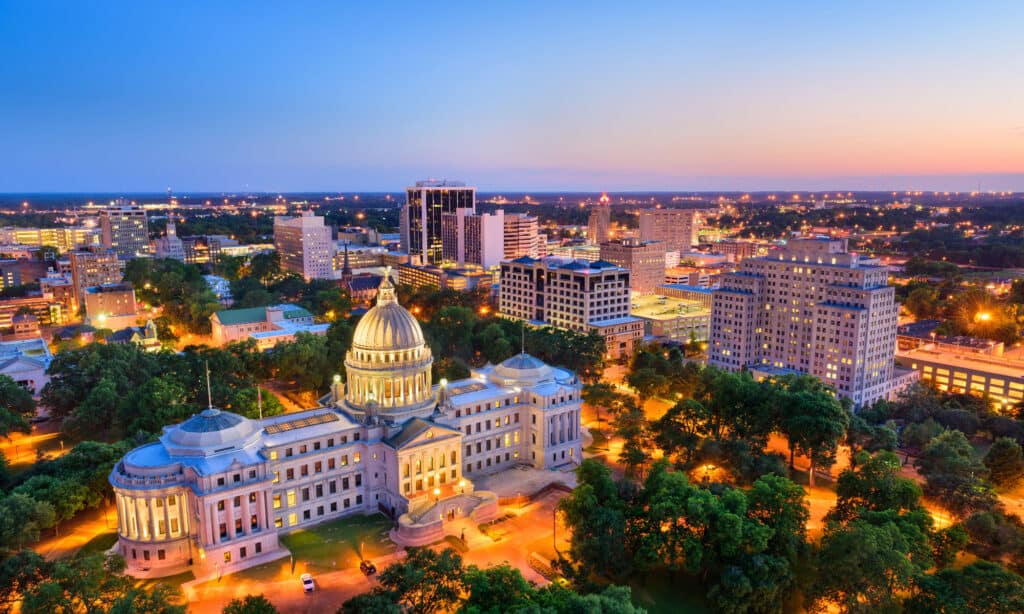
The third wettest state in the U.S. is Mississippi.
©Sean Pavone/Shutterstock.com
Mississippi sits adjacent to Alabama and is bounded on its western side by the same-named river. The third wettest state in the United States receives an average of 59 inches of rain every year, spread out over 100 days. A humid subtropical climate, comparable to Louisiana’s, prevails in the state. There is little change in temperature in the state throughout the long, hot, and humid summers. However, during the brief winter season, locations near the ocean are substantially hotter than those further inland. December is the wettest month in the state, and snowfall is uncommon. While the rain may bring the blues to some Mississippi locals, it is beneficial to the state’s top business – agriculture.
2. Louisiana – About 60 Inches Of Rain Per Year

Precipitation in Louisiana ranges from 50-70 inches with an average of 60.1 inches annually.
©iStock.com/UWMadison
Louisiana, like neighboring Mississippi, is located in the Deep South of the country and has a humid subtropical climate. It receives roughly 60.1 inches of precipitation each year, making it the second wettest state in the country. The state’s precipitation ranges from 50 inches in the north to 70 inches in the low-lying coastal southeast portions. While millions of people visit New Orleans each year for the world-famous Mardi Gras carnival and its colorful French Quarter, they probably encounter some rain during their stay. In fact, the city received 79.87 inches of rain in 2020. The Gulf of Mexico’s impacts, the state’s relatively flat landscape, and its low latitude all influence its climate. Tropical cyclones are particularly dangerous to Louisiana, and many of them have wreaked havoc in the past.
1. Hawaii – 63.7 Inches Of Rain Per Year

The wettest state in the U.S. is Hawaii.
©iStock.com/Michelle M Chan
Hawaii, a US state in Oceania, has the wettest climate in the US, with a mean annual precipitation of 63.7 inches. Hawaii is a group of islands in the central Pacific Ocean part of the Polynesia region. Hawaii’s weather is dependably warm, making it ideal for exploring the islands’ surf breaks, pristine beaches, and volcanoes. On the northeastern islands, rain falls primarily in the mountain regions and valleys. It’s caused by moist trade winds blowing in from the Pacific Ocean, driven up hillsides, and condensed into rain clouds. Snow falls on the steep Hawaiian mountains of Mauna Loa and Mauna Kea on occasion during the winter months, but it is an incredibly rare occurrence.
How is Rainfall Measured?
The amount of rain that falls is measured with a rain gauge, commonly stated in millimeters (mm). The rain gauge is used to calculate precipitation per square meter area, which is then observed over time to measure the amount of rainfall in a specific area. In the United States, excluding Hawaii and Alaska, the average moisture falling as rain and snow is 30.21 inches (767 millimeters).
Summary Of The 10 Wettest States In The United States
| Rank | State | Average Rainfall |
|---|---|---|
| 10 | South Carolina | 49.8 inches of rain per year |
| 9 | North Carolina | 50.3 inches of rain per year |
| 8 | Arkansas | 50.6 inches of rain per year |
| 7 | Georgia | 50.7 inches of rain per year |
| 6 | Tennessee | 54.2 inches of rain per year |
| 5 | Florida | 54.5 inches of rain per year |
| 4 | Alabama | 58.3 inches of rain per year |
| 3 | Mississippi | 59 inches of rain per year |
| 2 | Louisiana | 60.1 inches of rain per year |
| 1 | Hawaii | 63.7 inches of rain per year |
Additional Listings
If your curiosity goes beyond the top ten rainiest states in the United States, here’s the average annual rainfall for some other soggy states that deserve an honorable mention. Your knowledge of geography should tell you that the wettest states are grouped in regions, and they are all on the East Coast or east of/bordering the Mississippi River. (except Hawaii, of course).
- 11. Kentucky – 48.9
- 12. Massachusetts – 47.7
- 13. New Jersey – 47.1
- 14. Rhode Island 47.9
- 15. Delaware – 45.7
- 16. West Virginia – 45.2
- 17. Maryland – 44.5
- 18. Virginia – 44.3
The photo featured at the top of this post is © iStock.com/Michael Dean Shelton
Thank you for reading! Have some feedback for us? Contact the AZ Animals editorial team.






